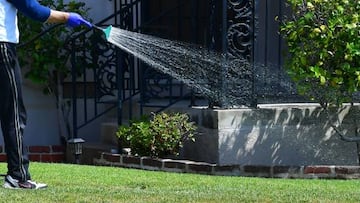Water restrictions in Los Angeles: what are the measures and how long will they last?
The Los Angeles Department of Water and Power (DWP) has been forced to introduce new limits on watering, set to go into force on Wednesday, 1 June.

The Los Angeles Department of Water and Power (DWP) will introduce tough new restrictions on watering in response to recent drought warnings. The rules will go into force on Wednesday, 1 June.
Close to four million Los Angeles residents will be subject to two-day-a-week watering restrictions, with additional rules governing the type of hose nozzles and times allowed. Anyone not complying with the rules will receive a warning, before getting escalating fines for any subsequent violations.
Martin Adams, general manager and chief engineer at the DWP, said of the rules: “We believe that going to two-day-a-week watering and getting people to really pay attention and ramp down their water use will keep us within the allotment that Met has offered us.”
What are the water restriction measures in Los Angeles?
Everyone in the DWP’s coverage area will be subjected to the new Phase 3 rules with residents required to limit their usage to conserve water.
All residents will be assigned two days a week on which they are allowed to water their garden. The dates will be based on the household address: Monday and Friday for odd-numbered addresses; and Thursday and Sunday for even addresses.
Even on those days, watering will be limited to no more than eight minutes, or 15 minutes for sprinkler with water-conserving nozzles. On all days, no watering is allowed between 9am and 4pm.
Other water agencies in the Southern California area have restricted watering to just one day per week, to stay within the Metropolitan Water District of Southern California’s order for a 35% reduction in water use. These are the toughest limits ever imposed by the district, but the severity of the drought have made drastic measures necessary. Earlier this year, California recorded the driest January and February on record, and the shrinking water supplies make the threat of droughts and wildfires even more pronounced.
“We are seeing conditions unlike anything we have seen before,” said Adel Hagekhalil, general manager of the Metropolitan Water District of Southern California. “We need serious demand reductions.”
DWP officials are confident that they can still achieve the required decrease with a two-day allowance. Adams explained:
“We’ve elected to use the allotment number because we do still have our own aqueduct supplies, our own groundwater, and we have the ability to shift some of our demands on to the Colorado River where there’s not a restriction.”






